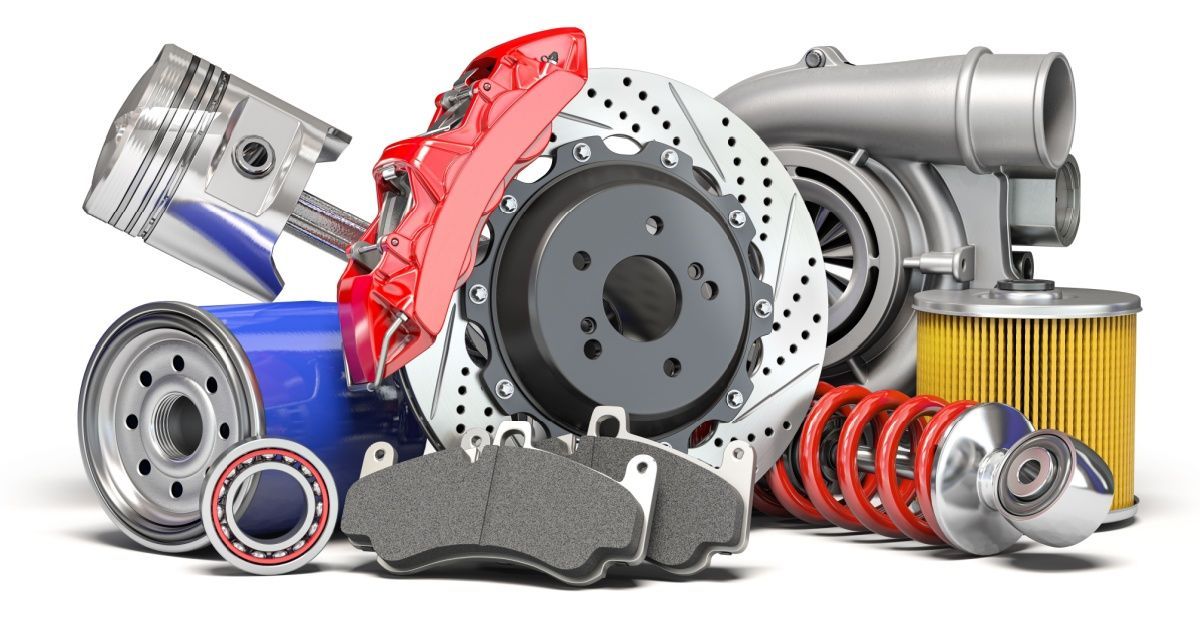The Different Types of Refrigerated Trucks: What Fits Your Needs?
Blog Post CTA
What Type of Refrigerated Truck is the Right Fit for What You Need?
After the manic period during the pandemic that left shippers struggling to keep up with customer orders, shipping rates are slowly returning to what they were before the pandemic.
According to DAT Freight & Analytics, the rates for all types of trucks have returned to about the level they were in 2018 after reaching staggering heights in 2021. For instance, the data shows that reefer rates topped out at $3.20 in December 2021 and have steadily dropped to $2.02 at the end of February 2023. Experts say freight rates will likely remain in that area for at least the first half of the year.
With the prices dipping, shippers can optimize operations and more closely consider their strategic options. They can improve efficiency by choosing the right reefer transport for their operations rather than hastily choosing a carrier based primarily on limited capacity. This blog explores the meaning of reefer freight shipping, the different types of refrigerated trucks, and ways to increase reefer performance efficiency.
What is Reefer Freight Shipping?
Refrigerated shipping is a method of freight transportation that uses temperature-controlled modes of transport for foods and products that require tightly monitored environments to maintain optimal quality and keep them safe to consume. Here is a list of some items that reefer freight shipping:
- Perishable food: Meat, seafood, poultry, dairy products, eggs, fruits, and vegetables must be refrigerated. Refrigerated trucking is vital in helping reduce load rejection due to spoilage. Technology advancements have greatly improved shippers’ and their supply chain partners’ ability to track, trace, and continuously monitor perishable food shipments to maintain quality and freshness throughout the journey.
- Certain beverages: Beer, wine, spirits, and many other non-alcoholic beverages are sensitive to temperature fluctuations and must be refrigerated during transport and warehousing.
- Pharmaceuticals: Most pharmaceuticals have strict temperature ranges shippers must adhere to. A temperature excursion could alter the chemical stability of medications and vaccines, resulting in lower efficacy or even life-threatening consequences if consumed. Some products may also need technology to regulate air moisture.
- Electronics: While temperature ranges when shipping electronics aren’t as stringent as those for consumable products, there are specific thresholds they need to stay within to arrive in good working condition. Electronics should generally be kept at room temperature — between 50 and 75 degrees Fahrenheit — to keep casings from overheating and batteries from melting. Bigger equipment, such as computers, should be shipped and preserved at 72 degrees. Electronics should not be shipped in extremely low temperatures either because the batteries can freeze and the casings can crack. There is also a concern over moisture that, if not regulated, could damage the electronics.
- Flowers: Flowers fall into a unique category; too cold during storage a duin that they cannot be refrigerated since the petals will be damaged yet they can wilt or rot if left in an uncontrolled atmosphere. That means a temperature-controlled truck is an ideal option for transporting flowers.
- Cosmetics: Colder temperatures can help the active ingredients of certain products, especially skin care products, last longer and allow the product to be better effective.
- Fine art and antiques: Extreme temperatures can cause paintings to crack. Generally, art should be transported and stored between 65 and 75 degrees. Also, severe temperatures can cause the materials in antique furniture to warp.
The demand for these products is growing even greater with businesses wanting on-demand access. The market size in 2019 was 3.1 million 20-foot equivalent units (TEU) and is predicted to
reach 7 million TEUs by 2030, an 8% compound annual growth rate, according to a reefer container market research report.
Different Types of Refrigerated Trucks
Products that are being shipped are not all in need of the exact same temperature control or climate control. That’s why there are different types of refrigerated trucks to handle different situations. With the booming market to meet current needs, it’s vital that shippers know precisely which reefer freight truck will best suit the product. Here are four types of reefers:
Full-Freezer Van
A full-freezer van allows for the most significant freezing of all types of refrigerated trucks. It has the thickest heat-resistant doors and sidewalls. The thicker walls are able to lessen how much the inside of the cargo area heats up due to the sun’s rays on the metal exterior.
Semi-Freezer Van
These freezer vans have more advanced insulation than chiller conversion or insulation vans, about 75 millimeters thick, and have a higher refrigeration capacity than chiller vans. They can transport frozen foods and other items that must stay below freezing and also have quick-defrost measures that mean there is no need for a defrost heater.
Chiller Conversion Van
A chiller conversion van is an insulated van with a refrigeration unit attached. It is able to keep heat out effectively while pumping in cool air to keep temperatures low. A chiller conversion van can transport many perishable products that do not require below-zero storage temperatures. Florists and companies shipping nonfrozen foods and beverages are able to use chiller conversion vans.
Insulation Van
While insulation vans do not have a refrigeration system, they can still keep products cool for as long as possible by keeping the heat out and the cold in. With 50-millimeter plastic foam insulation that cuts off potential heat and air entryways after the cargo is sealed, insulation vans are ideal for transporting cool long-lived products.
Boosting Reefer Performance with On-Demand Reefer Capacity
The increase in on-demand delivery because of the emergence of e-commerce has caused an escalation in on-demand reefer freight capacity. With many items going directly to the customer and the rise in expedited delivery, there is more pressure on all forms of shipping, including refrigerated freight. Here are some strategies to bolster reefer shipping efficiency and performance.
Procuring the Correct Mode of Transportation
With products that need to be moved in refrigerated transportation, time is essential to make sure the goods stay fresh. That means choosing a suitable mode of transportation is of utmost importance to get the product delivered safely and quickly to maintain that freshness, no matter how far the distance. Finding the van that will make sure your product stays at the right temperature is a must with the other consideration being the cost of that type of van. With the help of an experienced frozen LTL freight carrier, the entire process can be made easier.
Assuring Equipment Stays Clean and Well-Maintained
To make deliveries that maintain the product’s freshness, you need to have vehicles that are dependable and have very little chance of breaking down during the journey. With a well-maintained and clean vehicle, you can strikingly reduce the chances of something going wrong while also protecting perishable goods against contamination and thawing.
Being Prepared Before Loading
Freight must be already frozen or cooled to the appropriate temperature before loading and the reefer truck’s job is to maintain the temperature of the product during transport. So when the product is loaded, the truck must already be at the right temperature that the product needs to be at. The truck must then be able to maintain adequate temperature control when hauling the freight.
Knowing the Right Temperature Balance
It is important to keep in mind that the products have a temperature range. While it might be obvious that products that need to stay frozen cannot thaw, it is also important to remember that some products cannot be frozen. That is why you must know the temperature range the product needs to be in and be vigilant that it stays within that range by using monitor and tracking systems.
Exploring Routes for Faster Transportation Times
Delays during the transportation of a product might mean it will spoil and be of no use, which will put a dent in your bottom line. By exploring your options on the routes that the transport can take or by choosing a reliable partner that has more alternative ways of getting a shipment there faster, you are limiting the chances of an on-time delay and increasing the window of time you have to get the product there while it is still fresh.
Working With Reefer-Specialty Partners
One of the benefits of working with a partner that had knowledge in reefer freight specialties is that they can make sure the transport can handle the specific load you have and know what is needed for that particular shipment, whether it is frozen foods, produce, medical supplies, or vaccines. They can find the pertinent service for each unique shipment.
Properly Loading the Truck
This strategy may be overlooked, but it can be extremely helpful in keeping your product as fresh as possible while speeding up the unloading process. The order that shipments will be put on and taken off the truck and the way that the product is placed inside the truck can make a difference.
Entourage Freight Solutions Can Help You Find the Right Reefer Fit
Rates for shipping reefer freight are dropping and returning to what they were before the pandemic. That gives shippers the option to search for the best deal, not just for the price but for the ability and efficiency of the reefer transport company. The information in this article has helped you understand reefer shipping better and has provided you with some ways to raise your efficiency. One of the key ways to do that is to work with a dedicated third-party logistics company. Entourage Freight Solutions, a one-stop third-party logistics solutions service that specializes in foodservice, has an expert team to guide you through the world of refrigerated freight. With more than 7,500 carriers in its network, EFS can help you get freight on the road faster and more efficiently. Take a look at the many services EFS has to offer on our website. You can also request a quote on the website today.









